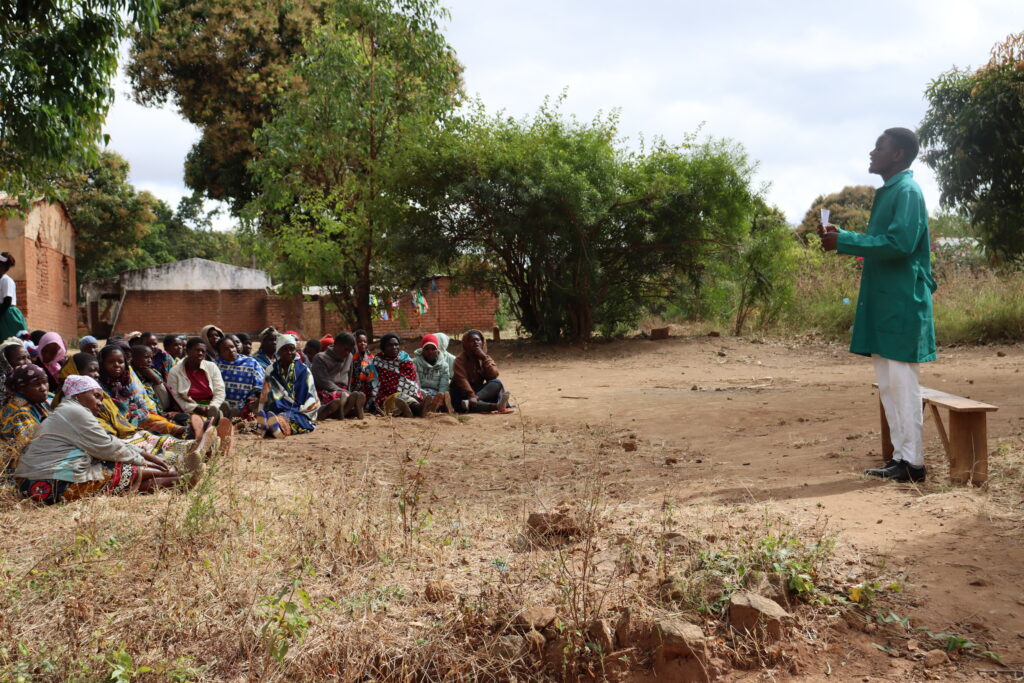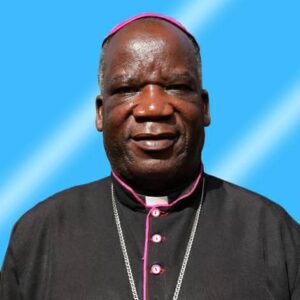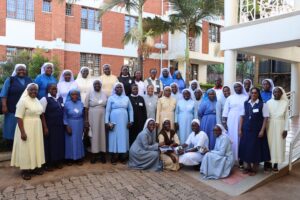MALAWI: Women in Malawi Recoil From Early Ante-natal Care, Catholic University Study Reveals

A student sharing the results of the assessment to the Community
Luke Bisani
Women from Namadzi area in Chiradzulu district in Malawi are reported to be shunning early ante-natal care, a development likely to affect safe motherhood efforts in the country.
According to a community midwifery assessment conducted by the 2019 cohort of nursing and midwifery students at the Catholic University of Malawi, more women start their ante-natal care in their third month, with the majority starting in the fourth month of their pregnancy.
The assessment further revealed that most men escort their wives for ante-natal care only when they are visiting for the first time during their pregnancy.
Speaking during feedback to the people from Group Village Headman Luna after the assessment, people from the area shun their early ante-natal care due to the “attitude of health workers” and “lack of adequate knowledge on when to seek initial antenatal care,” which are among some of the reasons that lead to their delay in seeking early antenatal care.
Group Village Headman Luna commended the students for their assessment, saying the results will help to improve safe motherhood in the area.
The chief added that he will call for an awareness meeting with his subjects to discuss the way forward for the assessment conducted in the area.
“I am happy that the Catholic University chose to visit us and assess the community. Our government is putting much effort into achieving safe motherhood in the country, and this assessment complements that effort,” said Group Village Headman Luna.
He further advised women to take appropriate channels to address challenges they face when seeking antenatal care at Namadzi Health Centre.
The chief also disclosed that he will take initiatives that will encourage husbands to be at the centre of safe motherhood by ensuring that their wives are attending ante-natal care on time.
Luna village is under the group village headman Luna, Traditional Authority Chitera, in Chiradzulu District. Approximately, the village has a total population of about 1,017, of which 275 are men, 214 are women, and 528 are children. The Village has a total of 266 households.


